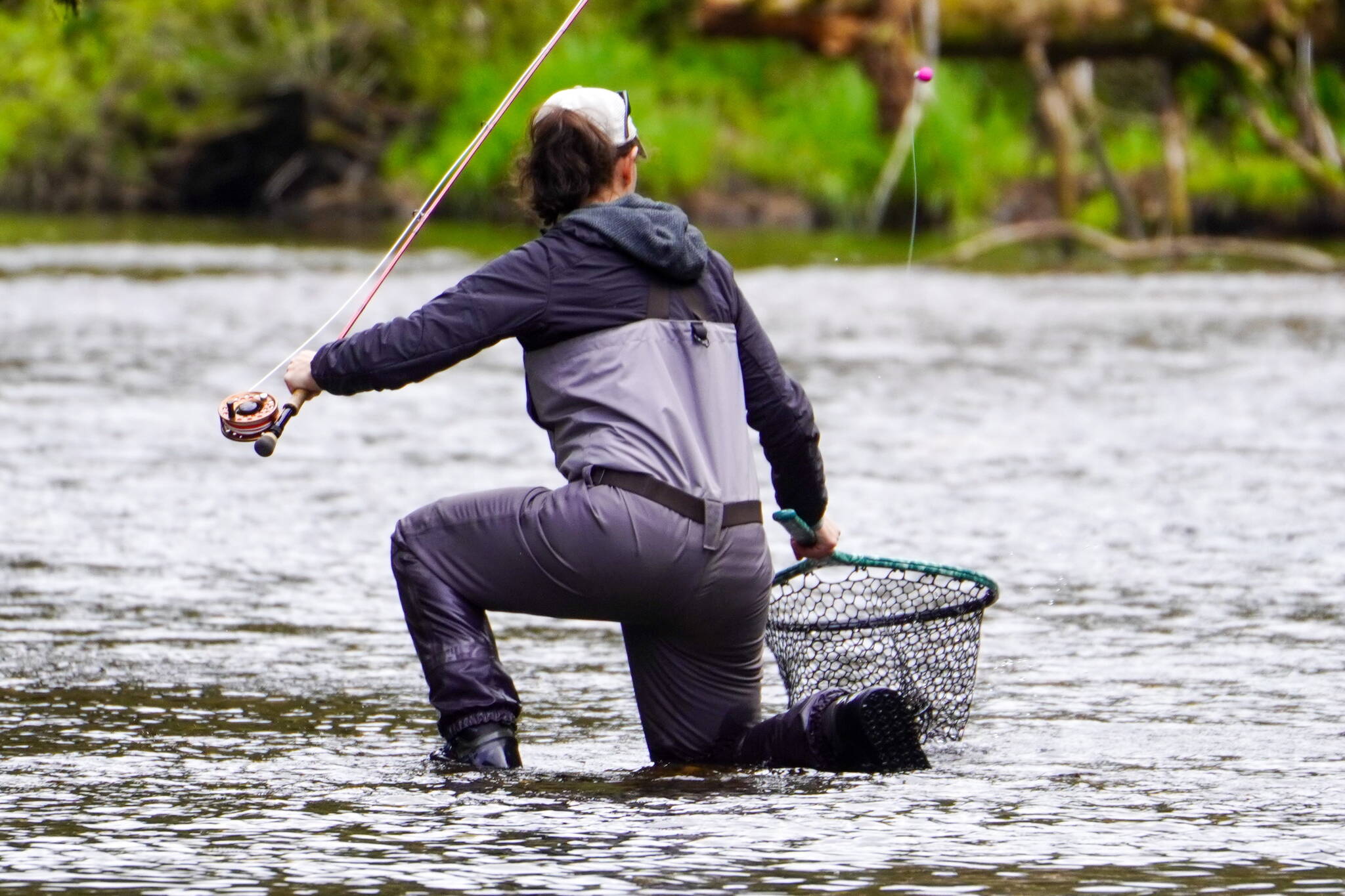In my young trout bum days I’d go hard.
It was the trade off for living in California. I’d pack my gear so I could leave right after work and fish the evening hatch if the destination was a closer river. Campsites were hit and miss in the late spring and late summer (I was back on Prince of Wales for as much summer as the teaching schedule allowed) and at least once I ended up at a small turnout next to a river under a “No Camping” sign. The campgrounds were full, it was dark and after midnight so I didn’t feel too bad.
The open road gives an angler the feeling of promise and anticipation. Mix CDs, the sound of wind and road before a stop for gas, cheap coffee and impulse snacks.
I had everything I might need in the truck. Caddis and stonefly patterns poked into the fabric of the roof, emergency line, freeze-dried meals, extra tent stakes and an enamel coffee percolator stained by campfire. I’d return home on Sunday evenings mentally restored but physically exhausted unless there was traffic because it’s hard to maintain the post-fishing evenness when it’s bumper to bumper.
As great as my mobile trout headquarters was, I’m happier now though the drive is just to the boat launch. I feel all the euphoria of a road trip without the road when I drop the motor and turn the ignition.
The open water between the boat launch and my river of choice is a destination in and of itself. Once you clear the no wake zone you’re on a different schedule. The real world is behind you, or in front, depending on how you want to define it.
You’re on a passive whale watching excursion. Bald eagles aren’t worth backing off the throttle to see unless there’s a frenzy over a bait ball which could mean whales. You consider slowing.
While I do miss the North River we sold to help with building our home, there’s an intimacy with a skiff you can’t get from inside a boat’s cabin. I don’t prefer a skiff over a 21-foot boat with a top, but each has its place.
It does complicate planning a bit. The wind is 10 knots and seas 1-2 feet, will it end up being 15 knots and 2-3? Then you think about the tide, parking and whether the river is even conducive to catching a steelhead. Most of these potential excuses end up being laughable. Of course it’s worth it. Go.
I still fish hard when I get to the river, but I don’t have the same desperation and pace I did. This might sound really old, but I don’t feel like I’m rushing to and through adventures like I used to. I don’t think there was anything wrong with my frenetic pace, but I can stop fishing for no reason other than to watch my wife cast, even if the run is plenty big for two people.
In his latest book, “The Believer,” David Coggins wrote, “When you have a lot of time it’s not something you think much about. When you realize there’s less time, things unfortunately start to move more quickly.”
So maybe getting off the gas a bit while I’m at the river is a subtle attempt to slow time.
Though it does seem like there is a necessary level of hours to qualify as a committed trout bum, it’s less about simple math and calculations. I may not be the trout bum I was, but I’ll never stop being one.
• Jeff Lund is a freelance writer based in Ketchikan. His book, “A Miserable Paradise: Life in Southeast Alaska,” is available in local bookstores and at Amazon.com. “I Went to the Woods” appears twice per month in the Sports & Outdoors section of the Juneau Empire.

